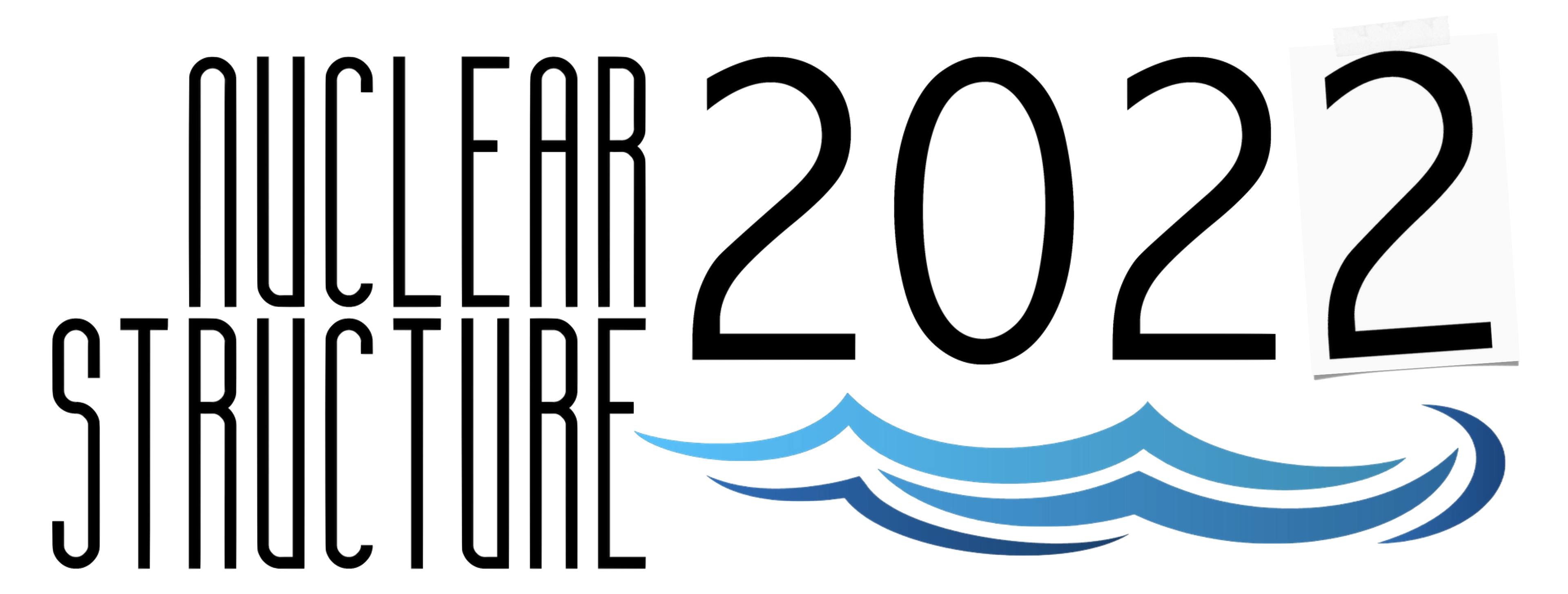Marco Rocchini
(Department of Physics, University of Guelph, N1G 2W1 Guelph, Canada)
Paul Garrett
(Department of Physics, University of Guelph, N1G 2W1 Guelph, Canada)
Magda Zielińska
(IRFU, CEA, Universitée Paris-Saclay, F-91191 Gif-sur-Yvette, France)
Silvia Lenzi
(Dipartimento di Fisica, Università di Padova, IT-35122 Padova, Italy and INFN Sezione di Padova, IT-35131 Padova, Italy)
Duc Dao
(Université de Strasbourg, CNRS, IPHC UMR 7178, F-67000 Strasbourg, France)
Frédéric Nowacki
(Université de Strasbourg, CNRS, IPHC UMR 7178, F-67000 Strasbourg, France)
Vinzenz Bildstein
(Department of Physics, University of Guelph, N1G 2W1 Guelph, Canada)
Andrew MacLean
(Department of Physics, University of Guelph, N1G 2W1 Guelph, Canada)
Bruno Olaizola
(TRIUMF, V6T 2A3 Vancouver, Canada and CERN, CH-1211 Geneva, Switzerland)
Zarin Ahmed
(Department of Physics, University of Guelph, N1G 2W1 Guelph, Canada)
Corina Andreoiu
(Department of Chemistry, Simon Fraser University, V5A 1S6 Burnaby, Canada)
Aditya Babu
(TRIUMF, V6T 2A3 Vancouver, Canada)
Gordon Ball
(TRIUMF, V6T 2A3 Vancouver, Canada)
Soumendu Bhattacharjee
(TRIUMF, V6T 2A3 Vancouver, Canada and Institute of Experimental and Applied Physics, Czech Technical University in Prague, 110 00 Prague, Czech Republic)
Harris Bidaman
(Department of Physics, University of Guelph, N1G 2W1 Guelph, Canada)
Chloe Cheng
(TRIUMF, V6T 2A3 Vancouver, Canada)
Robin Coleman
(Department of Physics, University of Guelph, N1G 2W1 Guelph, Canada)
Iris Dillmann
(TRIUMF, V6T 2A3 Vancouver, Canada and Department of Physics and Astronomy, University of Victoria, V8P 5C2 Victoria, Canada)
Adam Garnsworthy
(TRIUMF, V6T 2A3 Vancouver, Canada)
Stephen Gillespie
(TRIUMF, V6T 2A3 Vancouver, Canada)
Chris Griffin
(TRIUMF, V6T 2A3 Vancouver, Canada)
Gwen Grinyer
(Department of Physics, University of Regina, S4S 0A2 Regina, Canada)
Greg Hackman
(TRIUMF, V6T 2A3 Vancouver, Canada)
Madeleine Hanley
(Department of Physics, Colorado School of Mines, CO 80401 Golden, USA)
Andres Illana
(Department of Physics, University of Jyväskylä, FI-40014 Jyväskylä, Finland)
S. Jones
(Department of Physics and Astronomy, University of Tennessee, TN 37996 Knoxville, USA)
Alex Laffoley
(Department of Physics, University of Guelph, N1G 2W1 Guelph, Canada)
Kyle Leach
(Department of Physics, Colorado School of Mines, CO 80401 Golden, USA)
Rebeka Lubna
(TRIUMF, V6T 2A3 Vancouver, Canada and Department of Physics and Astronomy, Michigan State University, MI 48824 East Lansing, USA)
J. McAfee
(TRIUMF, V6T 2A3 Vancouver, Canada and Department of Physics, University of Surrey, GU2 7XH Guildford, UK)
Connor Natzke
(TRIUMF, V6T 2A3 Vancouver, Canada and Department of Physics, Colorado School of Mines, CO 80401 Golden, USA)
Sangeet-Pal Pannu
(Department of Physics, University of Guelph, N1G 2W1 Guelph, Canada)
C. Paxman
(TRIUMF, V6T 2A3 Vancouver, Canada and Department of Physics, University of Surrey, GU2 7XH Guildford, UK)
Carlotta Porzio
(TRIUMF, V6T 2A3 Vancouver, Canada and INFN Sezione di Milano, IT-20133 Milano, Italy and Dipartimento di Fisica, Università di Milano, IT-20133 Milano, Italy and Lawrence Berkeley National Laboratory, CA 94720 Berkeley, USA)
Allison Radich
(Department of Physics, University of Guelph, N1G 2W1 Guelph, Canada)
M. Rajabali
(Department of Physics and Astronomy, University of Tennessee, TN 37996 Knoxville, USA)
Frederic Sarazin
(Department of Physics, Colorado School of Mines, CO 80401 Golden, USA)
K. Schwarz
(TRIUMF, V6T 2A3 Vancouver, Canada)
S. Shadrick
(Department of Physics, Colorado School of Mines, CO 80401 Golden, USA)
Shivani Sharma
(Department of Physics, University of Regina, S4S 0A2 Regina, Canada)
J. Suh
(Department of Physics, University of Regina, S4S 0A2 Regina, Canada)
Carl Svensson
(Department of Physics, University of Guelph, N1G 2W1 Guelph, Canada)
Daniel Yates
(TRIUMF, V6T 2A3 Vancouver, Canada and Department of Physics and Astronomy, University of British Columbia, V6T 1Z4 Vancouver, Canada )
Tammy Zidar
(Department of Physics, University of Guelph, N1G 2W1 Guelph, Canada)

